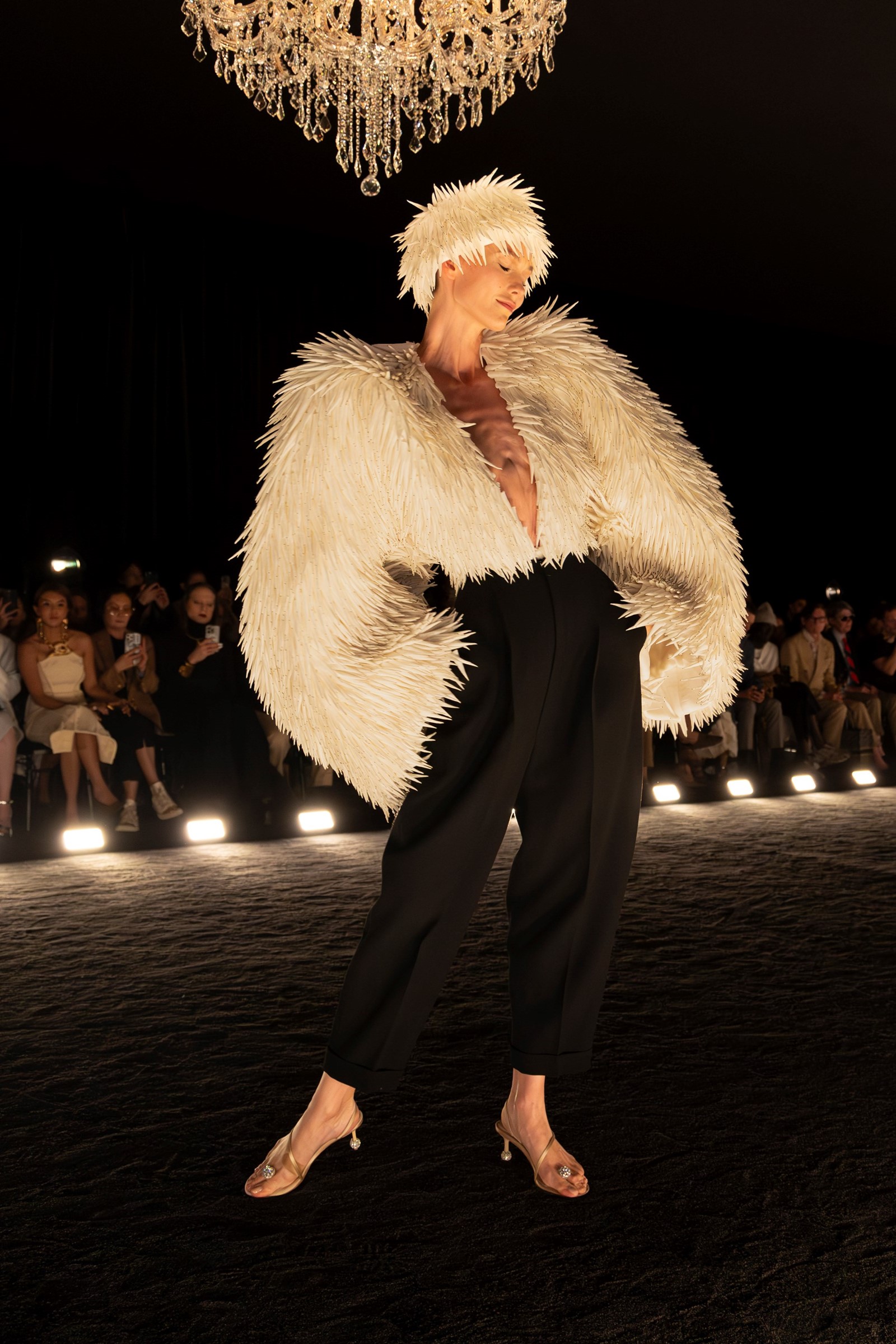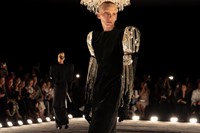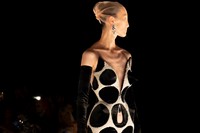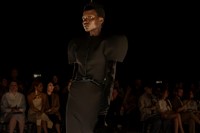Daniel Roseberry threw out a Salvador Dalí quote in the collection notes for his Autumn/Winter 2024 Schiaparelli haute couture show that I’ve never read before: “No one knows how to say Schiaparelli, but everyone knows what it means.” Obviously, Dalí was talking about the house’s founder, Elsa, but the same is true of its spectacular revival under Roseberry. You hear plenty of people massacring its Italian roots, but everyone knows the look the name denotes. That is, until this season, when Roseberry decided to tear up his self-written rule book and push Schiap to places it’s never been before.
Roseberry dedicated his collection to the idea of the phoenix – which is apt, given that he’s raised Schiaparelli from the ashes. Its recent resurgence has been characterised, largely, by surreal dresses adorned with rough hammered metalwork, massive globules of jewellery integrated into dress, in various shapes and forms, mostly in bright gold. That has a root in Elsa Schiaparelli’s back catalogue – in the 1930s, she explored embroidery techniques using unconventional, often brutalist materials (hammered strips of metal, fragments of mirror, deliberately rough ceramic flowers) and thumbed her nose at the purpose of the humble button by rendering them as mini objets d’art affixed to clothes, often too large to actually serve their purported function of fastening. But after the war, when fashion shifted away from the surreal oddities and military-shouldered sharp tailoring that Schiaparelli helped invent and towards Dior’s arch romanticism, Schiaparelli – house, and couturière – floundered. She declared bankruptcy and closed her salons in 1954.
Oddly, that was precisely the era Roseberry looked to for this infusion of energy and newness. That’s a bold strategy – take your weak point, transform it into a highlight. The collection also looked wider than Schiaparelli’s archives, this time taking in the work of the couturier Charles James as its crux. If we can call Schiaparelli “that Italian artist who made dresses” (that was an insult Gabrielle Chanel once threw her way, FYI), James was more of a sculptor – if Schiap painted her ladies, James forged his like monumental statues, his dresses often equally as immobile. But there’s another link between the two, too – Dalí dubbed James’ 1937 down-stuffed satin evening jacket the first piece of soft sculpture. And while Schiaparelli slipped into obscurity in the 50s, they were arguably James’ golden years. James was also Anglo-American (each country claims him as their own), linking with the Texan-born Roseberry too.
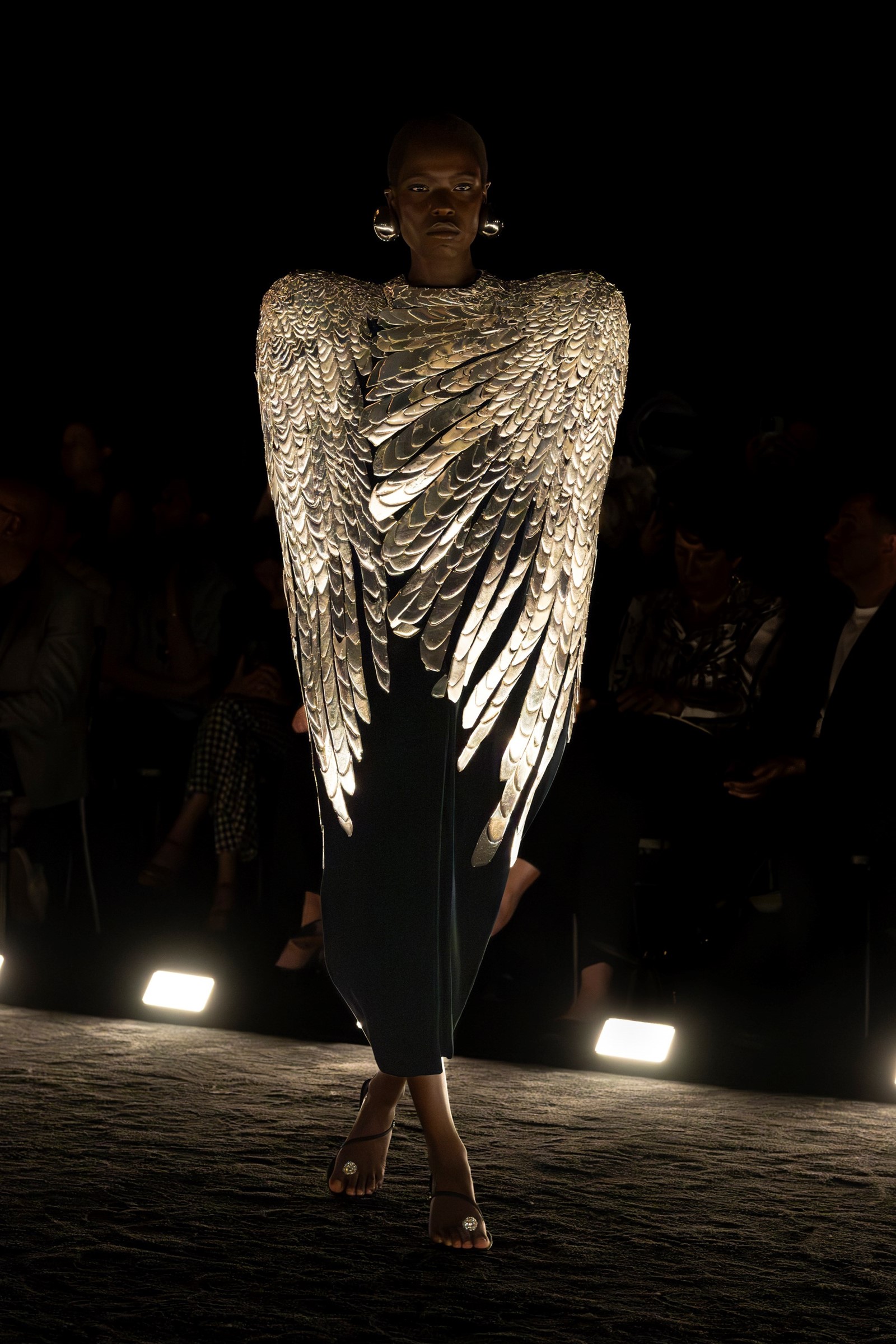
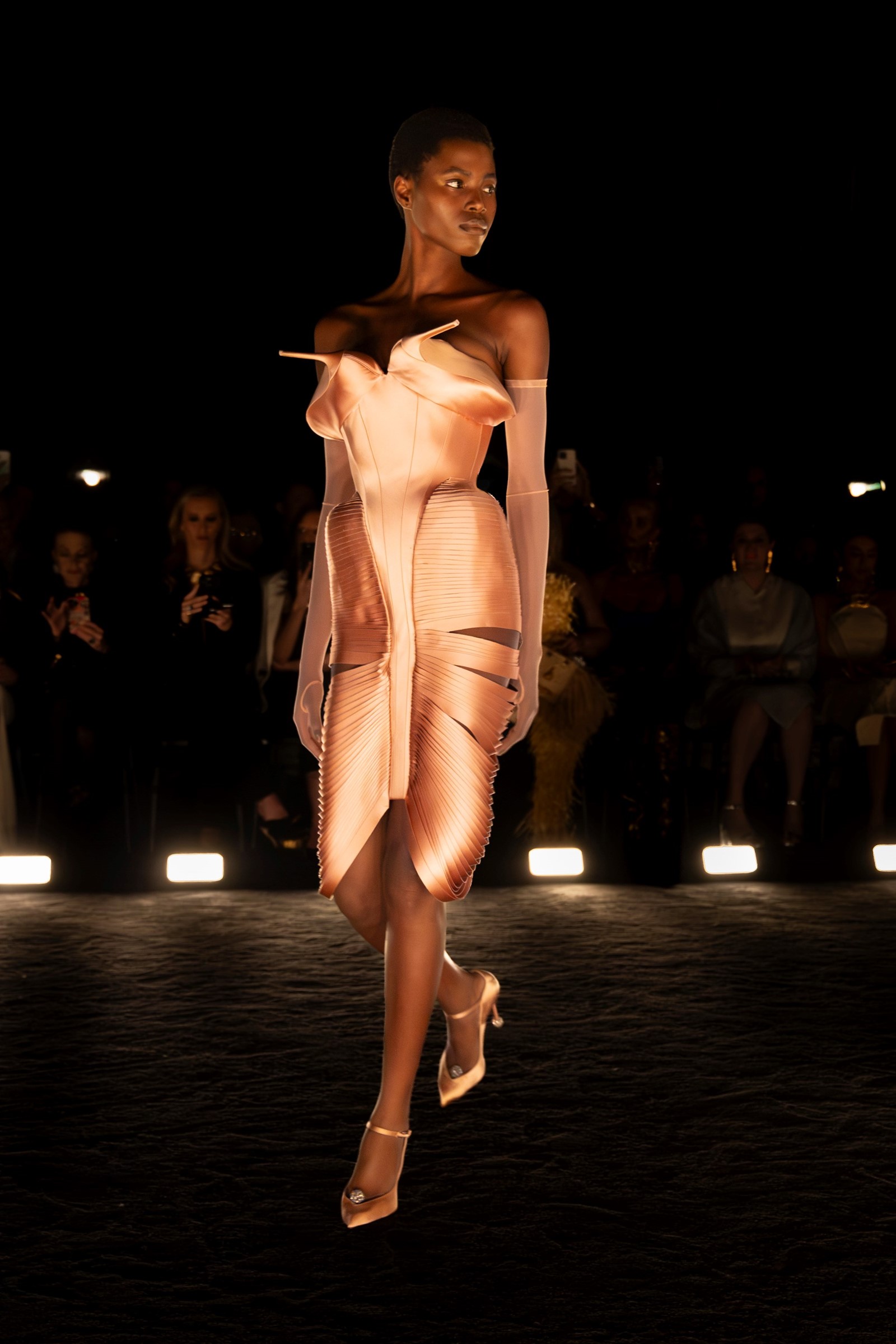
So gone was the gold, mostly. Instead, there was a sly undercurrent of latent sensuality, a potent sexuality that has hitherto been absent from Roseberry’s Schiap – or at least bubbling unseen. It was there in both James and Schiaparelli’s work: the former folding thick, luscious lobes of satin around the body to emphasise its voluptuousness; the latter, in line with Surrealist artists’ Freudian fantasies, puckering lips across suit pockets for your hands to slide suggestively inside, or perching a phallic lobster strategically across the crotch of an organza evening dress.
So Roseberry corseted, draping ribbons of satin around the figure to allow winks of flesh underneath, X-raying dresses with organza bodices or panels, or even simply proposing a brassiere topping a long evening skirt, with sheer tulle gloves. A dress with satin high heels perched over the breasts recalled Schiaparelli’s ‘Shoe Hat’ of 1937; but it also reminded me of a famous 1978 Antonio Lopez sequential drawing of a woman in a Charles James outfit transforming entirely into a fetishistic, beyond-high-heeled shoe. And Roseberry created a redux of James’ ‘Butterfly’ dress, created a year after Schiap closed up shop, which, despite the name, seems corporeal and fleshy in its enveloping of the figure, an explosion of filmy tulle wrapping around a tight core. Originally pleated, Roseberry plated his in enamel embroidery like a genetically-engineered geometric crocodile skin, or an insectoid exoskeleton. Maybe both could be sexy.
Sensuality isn’t just about looking, or about flashing flesh. It’s about touch, and that’s also where Roseberry got his rocks off. There were dresses encrusted with globules of metal, jackets quivering with bead-tipped organza spears, another velvet number polka-dotted with gilded metal plates like Midas’ grubby finger-prints (OK, Roseberry can’t quite stop going for gold). There was also a swaggering, confident new take on the Schiaparelli Shoulder, the emphatic square-padded silhouette Elsa made her own and reshaped 1930s fashion with as sweepingly as Dior did in 1947. But Roseberry didn’t reiterate the idea, he reimagined it with a swaying, curved shoulder exaggerated to register big-time in 2024. Schiaparelli called both her perfume and her autobiography Shocking: she was no shrinking violet.
Neither were these clothes, which propelled Schiaparelli and Roseberry to a new level. Namely, of a designer leading the pack, one whose next turn cannot be predicted. It’s exhilarating to be along for the ride. The next stop is his October ready-to-wear.
